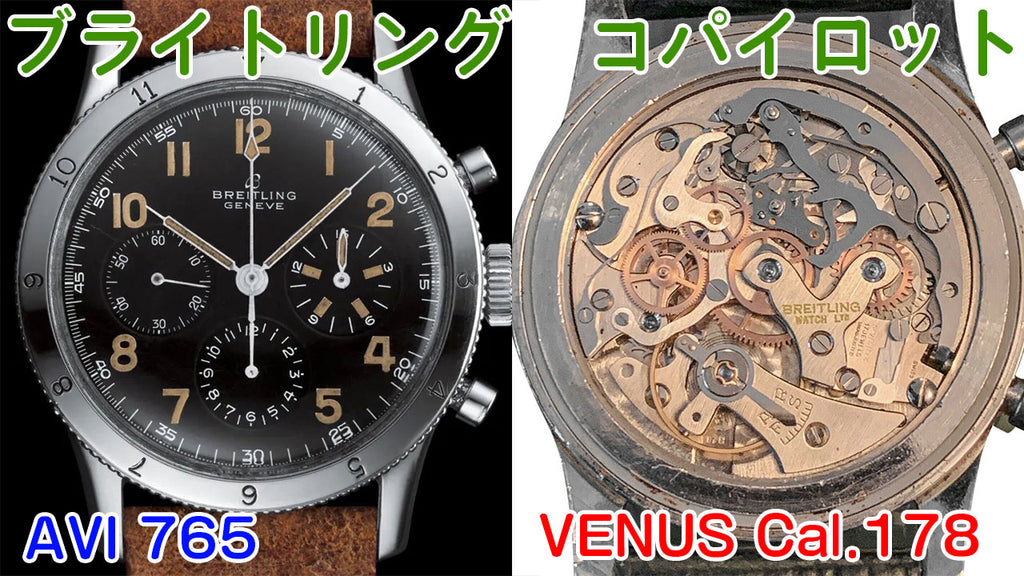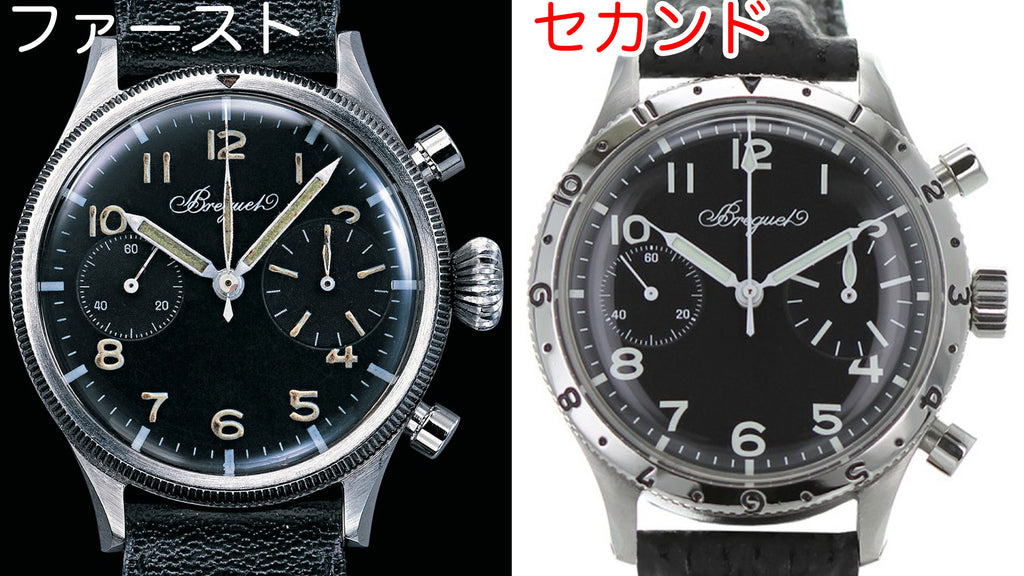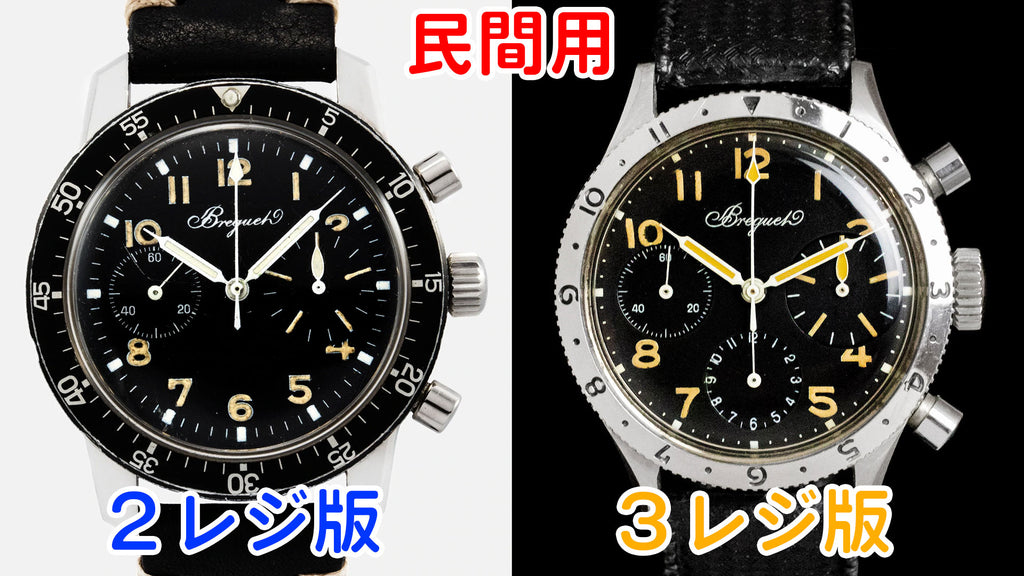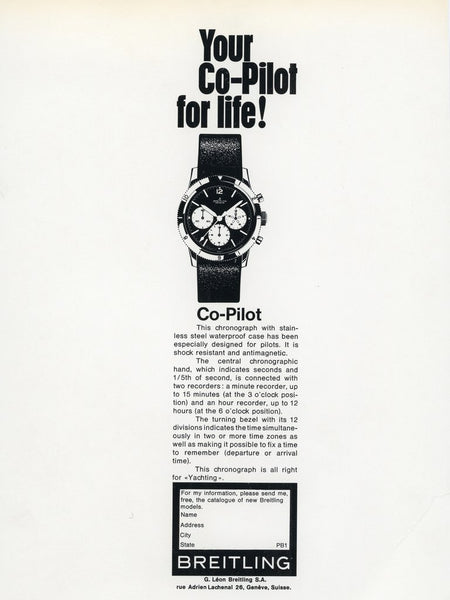Breitling's AVI 765 Co-Pilot is the most powerful Air Force standard watch
When it comes to watch brands for pilots, Breitling is probably the most popular.
Breitling was loved by such pilots, but of course, they did not only make civilian watches.
Since introducing the Navitimer in the 1950s, Breitling watches have undoubtedly become essential timepieces for pilots, but over the years, the brand has been able to apply its aviation expertise to military watches.
Today, we will explain the history and appeal of the "Co-Pilot," a military watch made by Breitling that is known only to a few people.
If you bought your co-pilot simply because you thought it was cool, I'm sure that after listening to my talk today, you'll feel even more attached to it and want to cherish it, so please stay with me until the end.
To watch the video, click here↓
History of the Ref. AVI 765 "Copilot" Project
The Navitimer was released in 1952, but behind the scenes, a project to create a military watch had already begun.
Breitling's involvement with military aviation dates back to 1946, when an internal division was established to create watches and instruments specifically designed for combat use.
This division was called "Breitling Eight Air Force" and actively advertised to the military and suppliers.
The catalogue at the time boasted that the watch "featured the latest technological improvements."
One of the masterpieces in this category is "Reference AVI 765."
AVI stands for aviation watch.
" Reference AVI 765" was designed for the French Air Force .
Eager to win a contract from the French military, in 1953 Breitling's Eight department designed a watch they thought would be perfect for the job.
The legendary original AVI 765
In fact, in addition to the AVI 765 we know, there is another AVI 765.
The first AVI 765 was born in 1953, one year after the release of the Navitimer.
Now let's take a look at the actual watch.

Unlike the Navitimer, the dial is designed to display only the most important information a pilot needs.
Now let's take a look at the dial.
- Black dial with good visibility
- Rotating bezel with triangular markers
・Second hand at 9 o'clock
12-hour counter at 6 o'clock
・15-minute counter at 3 o'clock
It is as follows.
At first glance, we might mistake the small square window at 3 o'clock for a day display.
However, this is a 15-minute accumulator, and since it takes exactly 15 minutes to check the aircraft before takeoff, the 15-minute accumulator is displayed digitally in the small window.
However, when this was taken to France's CEV (French Air Force Flight Test Center), the digital notation was not well received and it was not adopted.
This is what I am talking about, based on my prediction of the situation of the Breitling Eight Air Force at the time, but the French Air Force officially adopted Vyxa and Breguet for the Type 20 in 1950, so I think the AVI 765 was a bit late to the game.

So there must have been some impatience with the Breitling Eight.
So we tried to compete by incorporating the latest technology in terms of ``advanced functionality'' and ``visibility,'' but it was a failure.
I think it was something like this.
The birth of the second generation AVI 765
CEV has determined that the digital display is not very visible, so they will be announcing the next-generation model.
This was the second-generation AVI 765, which was released the following year in 1954.
Now let's look at the clock.

The second model has a military watch design that we commonly see.
The movement is the Venus Cal. 178, which is also installed in the Navitimer.
The changes that were pointed out by CEV include the 15-minute counter at the 3 o'clock position being changed from digital to analog, and the bezel being changed from a skipping numerals to an all-numeric version.
If you are a true fan of military watches, you may have already noticed that you have seen this design somewhere before, right?

Although it does not have a 12-hour counter, you can see that it is very similar to the Breguet Type 20 second watch.
This is just my speculation, but Breguet also sold the TYPE XX, which was almost identical to the civilian TYPE 20, at the same time.

The model shown on the left is the civilian version of Type XX, and we believe that the designer probably actually purchased the 3-register version and used it as a basis for designing the second-generation Copilot.
The designs are extremely similar.
However, the French military specification for the Type 20 required it to have two registers.
In addition, domestic production was politically encouraged, and the French manufacturer Dodanne & Aulikos, which had ties to the military, continued to be used by Breguet and Vyxa.
As a result, Breitling's AVI 765 did not meet the Type 20 standard set by the French military and was never adopted.
In my opinion, perhaps the French government was not interested in adopting Breitling.
This is because military watches are typically made to clearly set standards, such as the British Military's Mark 11 and the current Types 20 and 21.
Therefore, those manufacturers make watches based on that plan, but I don't think that the AVI 765, either the first or second model, was made in accordance with that process.
It seems likely that it was made while groping around in the dark under overwhelmingly unfavorable conditions.
The features of the French Air Force version are explained in detail in this video, so if you want to know more, please take a look at it when you have time.
AVI 765 and the copilot afterwards
Although the AVI 765 was not adopted as a military watch, Breitling decided to improve it for civilian use and sell it.
However, it was unable to differentiate itself from other watches with nicknames, and sales were weak initially.
Then, in 1964, the design was revamped and it debuted as the "Co-Pilot."
This is where the name "copilot" appears for the first time.
The origin of the name "Copilot" comes from the fact that this watch is meant to complement the Navitimer, and so it was given the name "Copilot," which means co-pilot.
If we were to put it in cool terms, it would be like the twin fighters, the Navitimer and Copilot.
Now let's take a look at the actual watch.

On the left is the AVI 765 and on the right is the redesigned CoPilot.

*Source: Breitling official website
The bezel, previously made of steel, has now been changed to anodized aluminum.
Furthermore, the dial, which was previously solid black, has been changed to a panda dial, with the registers replaced in white to improve visibility.
At the same time, the reference was changed from AVI 765 to Ref. 765CP.
This CP is the CP of Copilot.
summary
Speaking of Breitling, the Navitimer is their masterpiece, which has come to be known as their flagship model, but behind it there is actually a model called the Copilot, which was made to the same military standards.
Although it was never adopted by the French military, the watch was made to military standards and so the design is extremely cool.
The Copilot is not the kind of watch you can buy even if you want one.
The production numbers are very small, making this an extremely rare watch.
Therefore, the Copilot may be a model that only a few people know about.



